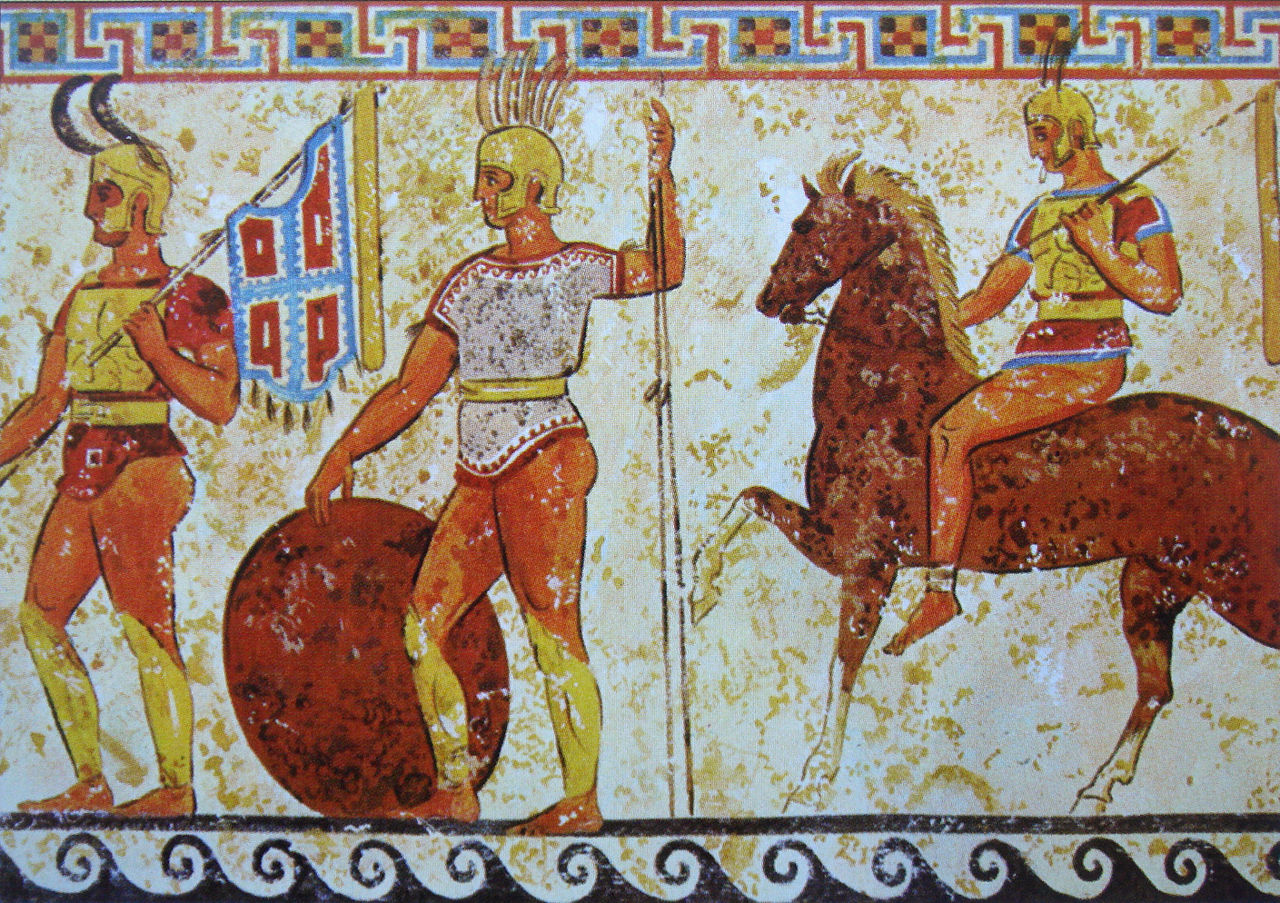First Samnite War (343-341 BC)

End of the War
No fighting is reported for 342. Instead the sources focus on a mutiny by part of the soldiery. According to the most common variant, following the Roman victories of 343 the Campani asked Rome for winter garrisons to protect them against the Samnites. Subverted by the luxurious lifestyle of the Campani, the garrison soldiers started plotting to seize control and set themselves up as masters of Campania. However the conspiracy was discovered by the consuls of 342 before the coup could be carried out. Afraid of being punished, the plotters mutinied, formed a rebel army and marched against Rome.
Marcus Valerius Corvus was nominated dictator to deal with the crisis; he managed to convince the mutineers to lay down their arms without bloodshed and a series of economic, military and political reforms were passed to deal with their grievances. The history of this mutiny is however disputed among modern historians and it is possible that the whole narrative has been invented to provide a background for the important reforms passed this year. These reforms included the Leges Genuciae which stated that no one could be reelected to the same office within less than ten years, and it is clear from the list of consuls that except in years of great crisis this law was enforced. It also became a firm rule that one of the consuls had to be a plebeian.
Livy writes that in 341 one of the Roman The Roman Republic was a form of government of Rome and the era of the classical Roman civilization when it was run through public representation of the Roman people. Beginning with the overthrow of the Roman Kingdom (traditionally dated to 509 BC) and ending in 27 BC with the establishment of the Roman Empire, Rome's control rapidly expanded during this period - from the city's immediate surroundings to hegemony over the entire Mediterranean world. consuls, Lucius Aemilius Mamercus, entered Samnite territory but found no army to oppose him. He was ravaging their territory when Samnite envoys came to ask for peace. When presenting their case to the Roman senate, the Samnite envoys stressed their former treaty with the Romans, which unlike the Campani they had formed in times of peace, and that the Samnites now intended to go to war against the Sidicini who were no friends of Rome. The Roman praetor, Ti. Aemilius, delivered the reply of the senate. Rome was willing to renew her former treaty with the Samnites. Moreover, Rome would not involve herself in the Samnites' decision to make war or peace with the Sidicini. Once peace had been concluded the Roman army withdrew from Samnium.
The Roman Republic was a form of government of Rome and the era of the classical Roman civilization when it was run through public representation of the Roman people. Beginning with the overthrow of the Roman Kingdom (traditionally dated to 509 BC) and ending in 27 BC with the establishment of the Roman Empire, Rome's control rapidly expanded during this period - from the city's immediate surroundings to hegemony over the entire Mediterranean world. consuls, Lucius Aemilius Mamercus, entered Samnite territory but found no army to oppose him. He was ravaging their territory when Samnite envoys came to ask for peace. When presenting their case to the Roman senate, the Samnite envoys stressed their former treaty with the Romans, which unlike the Campani they had formed in times of peace, and that the Samnites now intended to go to war against the Sidicini who were no friends of Rome. The Roman praetor, Ti. Aemilius, delivered the reply of the senate. Rome was willing to renew her former treaty with the Samnites. Moreover, Rome would not involve herself in the Samnites' decision to make war or peace with the Sidicini. Once peace had been concluded the Roman army withdrew from Samnium.
The impact of Aemilius' invasion of Samnium may have been exaggerated; it could even have been entirely invented by a later writer to bring the war to an end with Rome in a suitably triumphant fashion. The sparse mentions of praetors in the sources for the 4th century are generally thought to be historical; it is possible therefore that as praetor Ti. Aemilius really was involved in the peace negotiations with the Samnites. The First Samnite War ended in a negotiated peace rather than one part dominating the other. The Romans had to accept that the Sidicini belonged to the Samnite sphere, but their alliance with the Campani was a far greater prize. Campania's wealth and manpower was a major addition to Rome's strength.
HISTORY

RESOURCES
This article uses material from the Wikipedia article "First Samnite War", which is released under the Creative Commons Attribution-Share-Alike License 3.0.
© Stories Preschool. All Rights Reserved.












